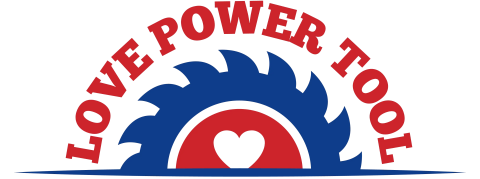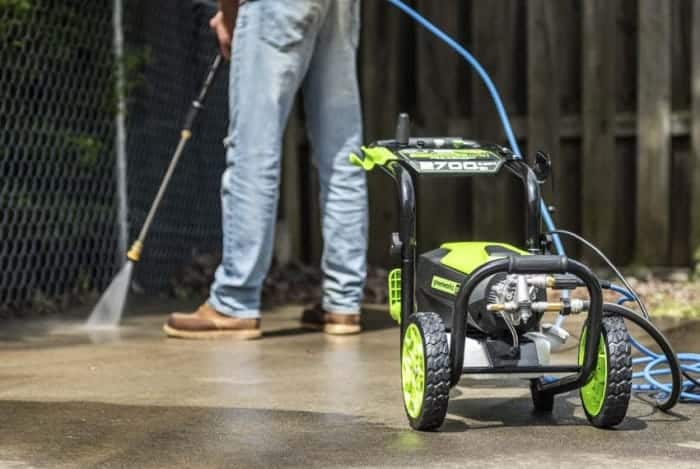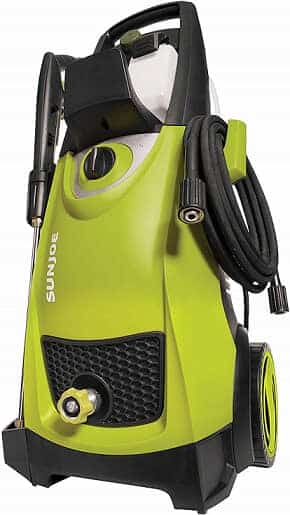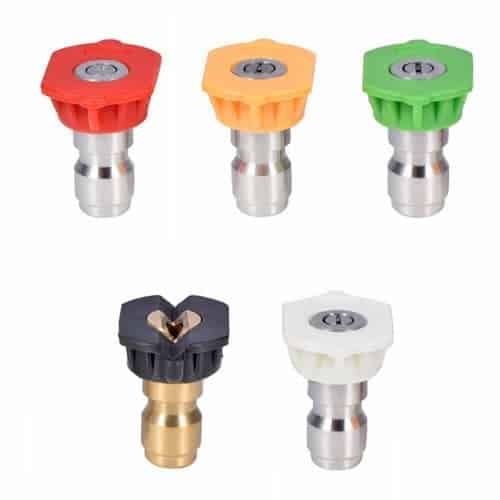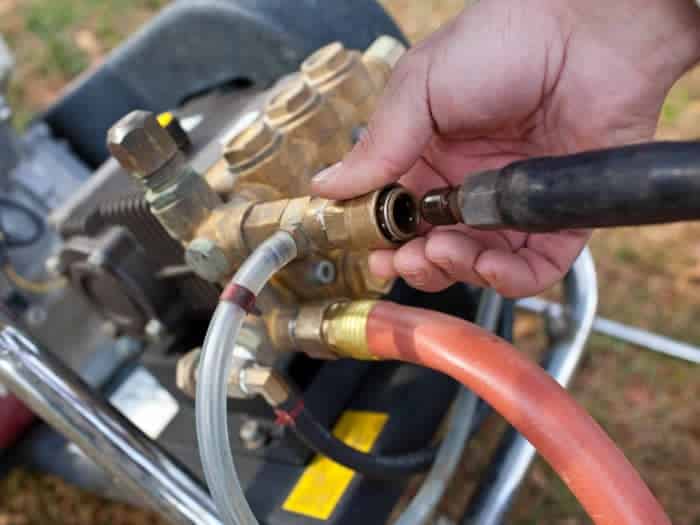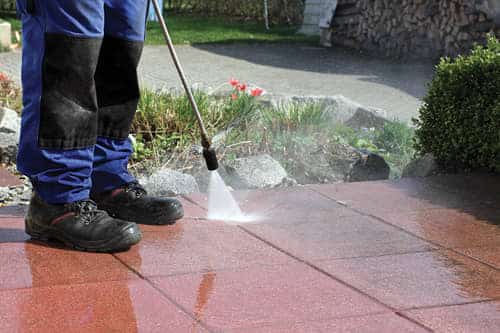Are you tired of a long household chore list of washing and cleaning in your family? These tasks are much simpler when you know how to start a pressure washer.
A pressure washer is a great assistant not only for many house owners, but also professional cleaners, or even a lazy person who just wants to do the cleaning quickly.
No matter who you are, you still get your work done well, safely, and efficiently by using a proper pressure washer. Let’s check this article out to learn more about it!
Things To Consider Before Starting A Pressure Washer
Even though this machine helps to get your cleaning and washing jobs done quickly, using it can be dangerous when you are unsure of what considerations before using it.
Keep in mind the following things that users would not normally think of, including washer types, technical terms, and appropriate nozzles.
Types Of Pressure Washers
In the market, there are two basic pressure washers: Electric and Gas. You can find some differences in their performance below.
Electric Pressure Washer
- Washes small vehicles like cars or motorbikes.
- Cleans grills, furniture, or floors
- Removes stains or dirt
Gas Pressure Washer
- Deep-cleaning concrete or metals or large areas
- Used for washing big vehicles like boats or trucks
- Cleans siding, fences, or wood decks
- Paints stripping
Be sure to consider the tasks you need to do and decide which machine is more suitable.
If you want to do some convenient and light-duty jobs, go for an electric pressure washer. And the gas pressure washer will be the perfect choice for high-intensity or heavy-duty jobs.
Some Important Technical Terms
The two factors (PSI and GPM) mentioned below affect the cleaning performance of the equipment.
Electric
- Delivers 1,300 – 1,400 PSI (pounds per square inch)
- Requires 1 – 2 GPM (gallons per minute)
Gas
- Delivers 2000 – 3000 PSI
- Requires 1-3 GPM
The PSI is the force the water will have on the surface. If the PSI is too low, it is harder to clean the surface. However, you can badly damage the surface if the PSI is too high.
And the higher the GPM (the amount of water is released), the faster the cleaning process will take and vice versa.
To avoid bad damage and problems to the surface you clean, selecting proper equipment and understanding the above terms are essential before using it.
Choose Right Nozzles
In addition to the PSI and GPM, the other factor that needed to be considered is the nozzle.
Depending on your cleaning task, there will be several nozzles that spray different pressures and angles.
0 degree (Red)
- High and strong pressure.
- Small, concentrated stream of water.
- Removes tough stains from metal and concrete.
15 degree (Yellow)
- Strips paint or mildew.
- Removes dirt from sidewalks.
- Can be used on most surfaces.
25 degree (Green)
- Flush debris from the hard surface.
- Good for furniture, cars or boats.
- Good for pre-wash rinse.
40 – 60 degree (White or Black)
- Cleans large areas fast.
- Ideal for fragile surfaces (blinds, windows, or pots).
- Rinse off the detergent.
Tips: If you do not know which nozzle to use, test on a small area with a low-pressure nozzle like 40 or 25-degree. Then adjust the distance or nozzles if needed.
How Do You Start A Pressure Washer?
Now, you get the essential things to consider before using a pressure washer.
Be more confident with our following step-by-step guide. And, bring a tidier and more attractive look to your house.
Setting-up Process before you wash!
Whether you are using a gas or electric pressure washer, the setting-up process before starting is similar and requires no tools. Follow these steps carefully before you starting a pressure:
- Place the washer on a flat area.
- Remove the debris from the water filter.
- Connect a garden hose to the unit’s water inlet, and the other end to the water source.
- Next, attach the high-pressure hose tightly to your washer’s water outlet.
- The other end of the power hose is connected to a powerful gun or sprayer. Make sure the collar snaps into place.
- Select the suitable nozzle.
- Install the nozzle: pull the collar back at the end of the gun, wand assembly, attach the nozzle, and release the collar.
- Turn the water completely on.
- Release the air by squeezing the spray wand trigger on the gun.
Starting The Gas Pressure Washers
- Check fuel or oil level.
- Open fuel valve.
- Move the choke to the close position.
- Move the throttle to the left.
- Turn ON/OFF switch to the ON position.
- Squeezing the trigger gun to release the pressure.
- Pull the engine recoil starter.
- Move the choke to the open position to start.
Starting The Electric Washer
The steps for this kind of washer are simpler and easier.
- Check the cords.
- Plug the motor into an outlet.
- Make sure to set the GFCI.
- Turn the switch on the motor to the ON position to start.
Read more: How To Correct Pressure Washer Shuts Off When Trigger Released?
How To Turn Off The Washer?
There will be a little bit of difference in the turning-off process between the two washers. Check it out!
With a gas washer, turn the engine switch to the OFF position. However, if it is an electric one, unplug the washer from the electrical outlet.
Then you can follow the below steps for both washers.
- Squeezing the trigger to release the pressure.
- Turn off the water supply.
- Remove the nozzle.
- Disconnect the hoses and remove as much water as possible from the hoses.
Safety Guidelines When using power washer
Whether you are a professional or new, it is essential to follow safety precautions, preventing injuries for yourself and damage to your equipment. Keep the following things in mind:
- Read and follow the instruction manual.
- Always wear protective equipment such as glasses, boots, gloves, or long pants.
- Watch out for children, pets, or any surrounding materials when using the washer.
- Let the motor or engine cool before moving or storing.
Wrap Up
The above is all about our guide. We hope that you can take advantage of this post. This item would be a great home equipment when you know to use a proper one.
Let’s bring this item home and make your family surprised with the results.
